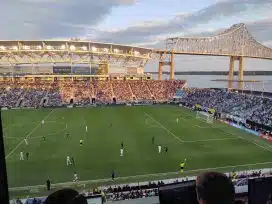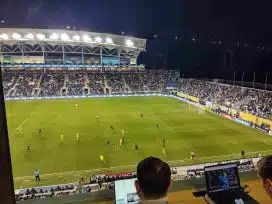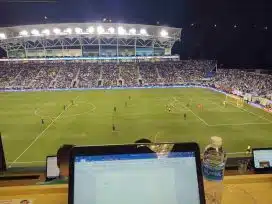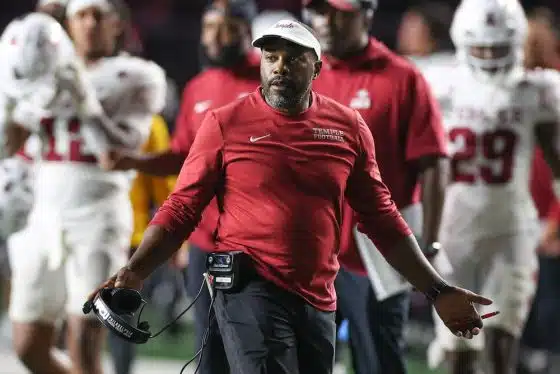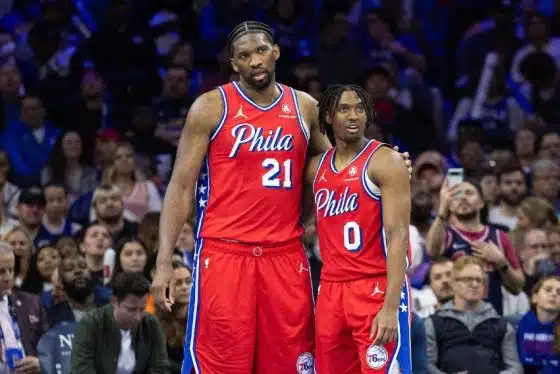Eagles
Eagles Potential Cap Casualty Evaluation: Jason Peters
By Paul Bowman, Sports Talk Philly Editor
Leading up to the start of free agency, Sports Talk Philly and Eagledelphia will be taking a look at the players on the Eagles roster who could become cap casualties this offseason and how the team should look to handle each.
In this edition, we will be covering offensive tackle Jason Peters.
An undrafted tight end out of Arkansas, the Buffalo Bills picked Peters up and converted him to a tackle. The move paid off as Peters played his first five seasons and made two Pro Bowls with the team. He ultimately started 55 games with the team.
The Eagles took a chance in the 2009 offseason and traded a first and fourth round pick to the Bills for Peters. A move that paid off as he has started 127 games for the Birds, making two All-Pro first-teams, seven Pro Bowls and three NFL Top 100 lists.
Even through injuries, have limited Peters’ play on the field, he has maintained a presence in the locker room and helped to mentor the younger offensive linemen that the Eagles have brought in.
Over the past four seasons, Peters has played about 66% of offensive snaps in 2015, 97% in 2016, 37% in 2017 and 80% in 2018. That’s just under 70% of snaps since the 2015 season and he suffered from multiple injuries to both his arms and legs this past season. Despite that, the veteran was able to positively contribute to the team and had an excellent performance against Khalil Mack that kept the Eagles in the divisional round game against the Chicago Bears.
Something of concern is the amount of penalties (specifically false starts) that Peters has been taking over the past few season attempting to cope with his injuries. He lead the league in false start penalties in 2016 (when he played nearly all of the team’s offensive snaps) with 10 and there was only two players (Bobby Hart and Morgan Moses) with more than the six he registered this season. They seem to occur at the most inopportune moments, in part, because they do often occur when Peters has an injury acting up and are preceded or followed by a breakdown of protection.
Aside from Peters, the Eagles have Lane Johnson entrenched at right tackle, Halapoulivaati Vaitai, Jordan Mailata, and Tyreek Burwell. Isaac Seumalo can also play tackle, but with Brandon Brooks possibly missing the beginning of the season due to his injury, he and Wisniewski are essentially locked in as the starting guards at the moment.
Mailata could become an elite player, but it may be too soon to put him into the starter’s role. Burwell is likely just a camp body and Vaitai can be a good tackle, but is often not too good coming off the bench mid-game.
The draft this season is not deep at offensive line, so there are not many immediate impact players in the draft despite the Eagles having three picks in the first two rounds.
Peters would return to the Eagles with a $10.6 million cap hit in 2019. Releasing Peters (or in the scenario he chooses to retire) would clear $8 million of that space. If they want to franchise tag Nick Foles, they’ll need around $20 million cleared. The only moves that would clear more room than releasing Peters would be releasing Jernigan or Agholor.
Peters’ hit is the seventeenth highest in the league, but combined with Lane Johnson’s seventh highest hit, the Eagles have more money than any other team tied up in the offensive tackle position.
Peters is also 37, the oldest starting tackle in the league other than Andrew Whitworth, who is the same age. The next oldest tackle is Joe Staley at 34 and, although Whitworth is the same age, Peters has played two more seasons than either of those two, adding that much more wear and tear on his body.
Based on the fact that he has previously balked at the Eagles each time they have asked Peters to take a pay cut, that is essentially not a viable option.
In a vacuum, it would make sense for the Eagles to keep Peters, but they need to make some cap room and releasing Peters is one of the easiest ways to create a lot of room. Peters’ injury history, despite his dominance in between, is concerning and Vaitai, the primary backup, can be far more effective when given the starting reps in practice rather than his coming in cold and giving up a few sacks or pressures before he can get in a groove. If Vaitai proves himself, the Eagles will also know whether to keep him around next offseason or he could become a hot commodity and raise the compensatory draft pick they receive for him if he leaves via free agency. Additionally, Peters is unlikely to accept a pay cut and it is unlikely that the Eagles would seek to extend a 37-year-old coming off a season with two major injuries, leaving only three options: retirement, release, or keeping his current contract.
Peters has said he wants to retire an Eagle. If he chooses not to retire on his own, releasing him may yield the same affect as it did on Brent Celek last season – he may ultimately choose to retire after realizing he would rather not play for another team. Releasing Peters to make room for Foles’ franchise tag and then re-signing him following Foles being traded could also be an option. At that point, the Eagles would have around $18 million in space in addition to the space needed to sign their draft picks.
Decision: Release
PREVIOUS EAGLES OFFSEASON ENTRIES:
Eagles Free Agent Evaluation: Brandon Graham
Eagles Free Agent Evaluation: Jordan Hicks
Eagles Free Agent Evaluation: Ronald Darby
Eagles Free Agent Evaluation: Jay Ajayi
Eagles Free Agent Evaluation: Golden Tate
Eagles Free Agent Evaluation: Jordan Matthews
Eagles Free Agent Evaluation: Richard Rodgers
Eagles Free Agent Evaluation: Haloti Ngata
Eagles Free Agent Evaluation: Mike Wallace
Eagles Potential Cap Casualty Evaluation: Tim Jernigan
















